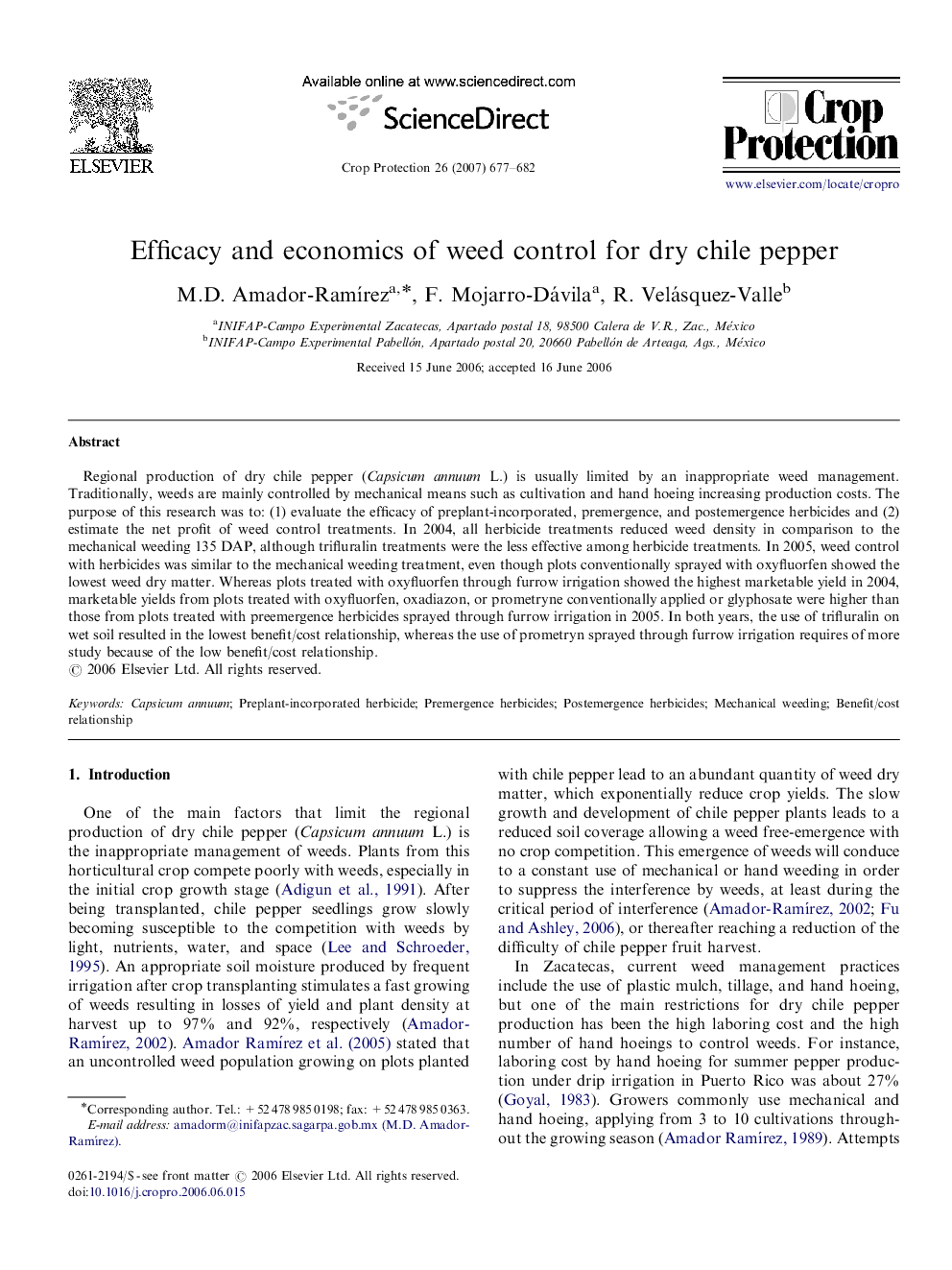| Article ID | Journal | Published Year | Pages | File Type |
|---|---|---|---|---|
| 4507197 | Crop Protection | 2007 | 6 Pages |
Regional production of dry chile pepper (Capsicum annuum L.) is usually limited by an inappropriate weed management. Traditionally, weeds are mainly controlled by mechanical means such as cultivation and hand hoeing increasing production costs. The purpose of this research was to: (1) evaluate the efficacy of preplant-incorporated, premergence, and postemergence herbicides and (2) estimate the net profit of weed control treatments. In 2004, all herbicide treatments reduced weed density in comparison to the mechanical weeding 135 DAP, although trifluralin treatments were the less effective among herbicide treatments. In 2005, weed control with herbicides was similar to the mechanical weeding treatment, even though plots conventionally sprayed with oxyfluorfen showed the lowest weed dry matter. Whereas plots treated with oxyfluorfen through furrow irrigation showed the highest marketable yield in 2004, marketable yields from plots treated with oxyfluorfen, oxadiazon, or prometryne conventionally applied or glyphosate were higher than those from plots treated with preemergence herbicides sprayed through furrow irrigation in 2005. In both years, the use of trifluralin on wet soil resulted in the lowest benefit/cost relationship, whereas the use of prometryn sprayed through furrow irrigation requires of more study because of the low benefit/cost relationship.
